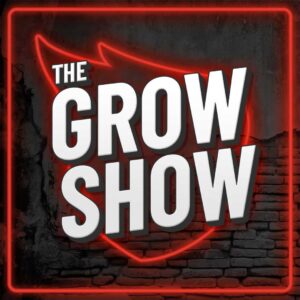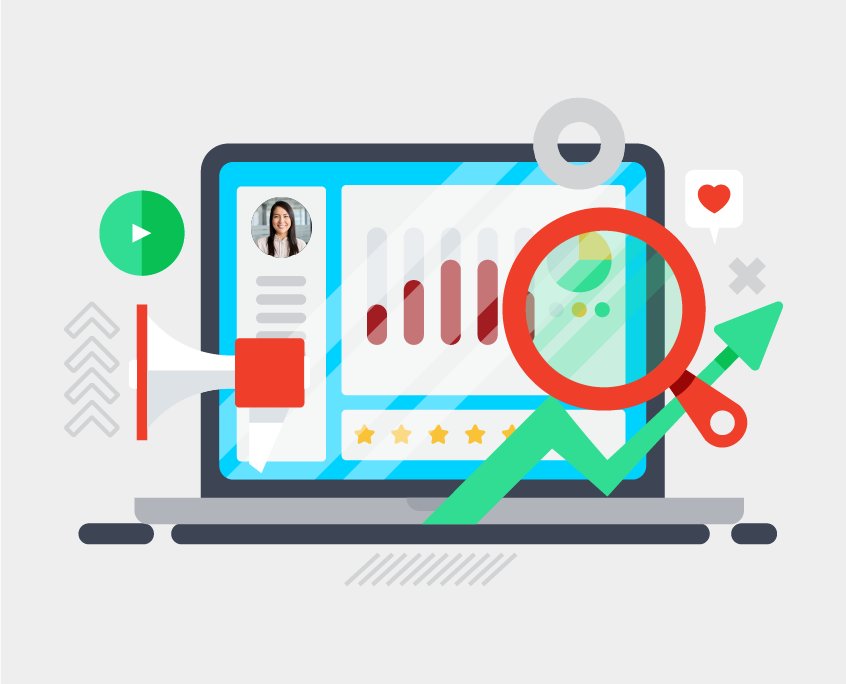In today’s hyper-competitive digital environment, understanding your Cost Per Lead (CPL) isn’t optional—it’s essential. Whether you’re a marketing specialist, a startup founder, or a sales leader, accurately calculating and optimizing CPL can shape your strategy and influence your long-term growth.
This guide unpacks everything you need to know about CPL: how to calculate it, what it means in real business terms, and how to bring it down without sacrificing lead quality. You’ll walk away with clear, actionable insights that help your team make smarter decisions, move faster, and drive better results.
Contents
- 1 What is Cost Per Lead and Why It Matters
- 2 Understanding the Role of CPL in the Marketing Funnel
- 3 How to Calculate Cost Per Lead: Step-by-Step
- 4 Advanced CPL Calculation: Segmenting and Attribution
- 5 5 Strategies to Optimize and Lower Your Cost Per Lead
- 6 Measuring Lead Quality Alongside CPL
- 7 Common Pitfalls and How to Avoid Them
- 8 Future Trends in Cost Per Lead Measurement
- 9 Wrapping Up
What is Cost Per Lead and Why It Matters
Cost Per Lead (CPL) is the average amount you spend to acquire a lead—someone who’s shown interest in your solution, typically by engaging with your content or submitting contact information.
Why does CPL matter? Because it’s directly tied to how efficiently you’re generating pipeline. A lower CPL means you’re stretching your marketing dollars further, freeing up budget for scaling, nurturing, or expanding into new channels. On the flip side, a high CPL often points to misaligned targeting, underperforming channels, or gaps in strategy.
Research suggests that the average CPL ranges from $30 to $200 across industries. B2B sectors tend to fall on the higher end due to longer sales cycles and complex decision-making processes.
And while numbers matter, context is everything. A CPL that’s acceptable in one vertical could be unsustainable in another. Long-term success depends on optimizing for both cost and lead quality, not just driving numbers at the lowest price.
Inbound marketing tactics like SEO and content often produce lower CPLs over time, while paid campaigns can offer speed and scalability. Both have value if you measure, adapt, and align them to your broader goals.
Understanding the Role of CPL in the Marketing Funnel
CPL doesn’t live in a vacuum. It’s one part of a much bigger equation. While it’s an early indicator of campaign efficiency, chasing low CPLs at the expense of lead quality is a recipe for wasted effort.
High-performing marketers evaluate CPL alongside:
- Conversion rate
- Lead quality score
- Customer Acquisition Cost (CAC)
That full-funnel view ensures you’re not just filling the pipeline, but filling it with prospects who are likely to convert. It’s about building momentum that lasts, not quick wins that fall flat.
You can go a step further by integrating lead engagement metrics, feedback loops, and post-acquisition performance to see how CPL translates into revenue and retention. Elite teams do this to make strategic budget decisions.
Want to See How Cost Per Lead Impacts Your Customer Acquisition Cost?
Understanding CPL is just one piece of the puzzle. Download our free Customer Acquisition Cost Analysis Sheet to get a full view of what it really takes to win new business—and where you can improve efficiency.
How to Calculate Cost Per Lead: Step-by-Step
Basic CPL Formula
At its core, CPL is simple:
CPL = Total Marketing Spend / Number of Leads Generated
If you spent $5,000 on a campaign and generated 250 leads:
CPL = $5,000 ÷ 250 = $20 per lead
Straightforward—but accuracy matters. Getting this right depends on defining what counts as a lead and ensuring all marketing spend is correctly tracked.
Over time, tracking your CPL helps you identify patterns, optimize campaigns, and uncover opportunities to scale.
Defining Marketing Spend Accurately
To get a true CPL, you need to include every dollar that went into generating leads. That means:
- Paid ad costs (Google, LinkedIn, Meta, etc.)
- Content creation and design
- Marketing software and CRM tools
- Consultant or agency fees
- Landing page development and hosting
Ignoring even one of these inputs can skew your numbers. Bonus tip: separating fixed and variable costs gives you even more visibility into what’s driving results—and what’s not.
Accurately Counting Leads
Not all actions qualify as a lead. Before you count, define what “lead” means to your business:
- Contact form submissions
- Event/webinar registrations
- Content downloads
- Demo or consultation requests
Use tracking tools like Google Analytics, Salesforce, or Hubspot to attribute leads correctly. Eliminate duplicates and spam entries to maintain clean data. Better yet, implement lead scoring to focus on the highest-fit prospects.
Advanced CPL Calculation: Segmenting and Attribution
Smart marketers go beyond the surface. Here’s how to extract deeper value from your CPL tracking.
Segmenting CPL by Channel and Campaign
Leads from different sources behave differently. A lead from a LinkedIn campaign might cost $100 but convert at a higher rate than a $20 lead from Facebook.
Break out your CPL by:
- Channel (social, search, email, etc.)
- Campaign
- Target audience segment
This allows for better budget allocation and a clearer picture of what’s truly working. You’ll stop guessing and start optimizing.
Attribution Models and Their Impact on CPL
Attribution affects which touchpoints get credit and how you calculate CPL per channel. Common models include:
- First-touch: credits the initial interaction
- Last-touch: credits the final step before conversion
- Multi-touch: spreads credit across the journey
Multi-touch models offer richer insights but require more advanced analytics. As buyer journeys become more complex, attribution modeling becomes critical to measuring CPL accurately.
Looking to Lower Your Cost Per Lead Without Sacrificing Quality?
Generic outreach drives up spend and drives down results. Our B2B lead generation services are built to identify the right prospects, at the right time, through data-driven targeting and real conversations.
Explore Our Lead Gen Solutions
5 Strategies to Optimize and Lower Your Cost Per Lead
Lowering CPL doesn’t mean cutting corners—it means getting smarter. Here are proven strategies for doing just that:
1. Sharpen Targeting with Data-Driven Segmentation
Dial in on your best-fit audience using behavioral, firmographic, and demographic data. The more precise your targeting, the less wasted spend, and the higher your lead quality.
Platforms like Google and LinkedIn Ads allow deep segmentation to help you connect with the right people at the right time.
Related Article: What You Need to Know for Data-Driven Lead Generation
2. Enhance Your Landing Page Experience
You can’t control who clicks, but you can control the experience they land on. Optimize your pages to:
- Load fast (under 3 seconds)
- Use clear CTAs
- Reduce form friction
- Show trust signals (testimonials, certifications, badges)
Test everything—from headlines to layout—and watch your conversion rate climb while your CPL drops.
3. Leverage Automation and Lead Scoring
Marketing automation helps scale your follow-up while keeping it personal. Meanwhile, lead scoring ensures your team prioritizes the best prospects.
Drip campaigns, behavioral triggers, and CRM automation keep your pipeline moving and your reps focused.
4. Test and Iterate Constantly
A/B test every major element: ad copy, creative, targeting, and landing pages. Small tweaks lead to big CPL improvements over time.
Let the data guide your decisions. What works today might not work next quarter.
5. Use Lookalike Audiences and Retargeting
Lookalikes help you reach new prospects who mirror your top customers. Retargeting brings back visitors who didn’t convert on the first visit.
Both strategies reduce acquisition costs and boost engagement, without increasing spend.
Measuring Lead Quality Alongside CPL
High lead volume with low conversion doesn’t move the needle. CPL must be evaluated against lead quality to ensure you’re attracting the right audience.
Key Metrics to Track
- Lead-to-Customer Rate: How many become paying customers?
- Average Deal Size: Are leads driving revenue?
- Sales Cycle Length: How long does it take to convert?
- Lead Engagement Score: Are they interacting with your brand?
Integrate these metrics with your CPL analysis to see the full picture. This ensures your efforts are not only efficient but also effective.
Common Pitfalls and How to Avoid Them
Even seasoned marketers make mistakes. Avoid these CPL missteps:
Ignoring Hidden Costs
Skipping over design, tech fees, or labor costs? That’ll skew your CPL. Track everything to get an accurate picture.
Prioritizing Quantity Over Quality
A low CPL isn’t impressive if the leads never convert. Don’t chase volume—chase value.
Read More: Balancing Lead Quality and Quantity
Inconsistent Lead Definitions
If you change your criteria mid-campaign, your data will become unreliable. Set clear definitions upfront—and stick to them.
Overlooking Attribution
Assuming all leads came from one touchpoint leads to poor budgeting. Use robust tracking and attribution modeling to know what’s really working.
Future Trends in Cost Per Lead Measurement
The landscape is evolving—and staying ahead means staying informed. Here’s what’s coming:
AI-Powered Analytics
AI is already transforming how marketers analyze and predict lead quality. Expect smarter scoring, better audience modeling, and automated optimizations.
Cross-Channel Attribution
As buyers engage across devices and platforms, advanced attribution models will become the standard, not the exception.
Privacy-First Data Strategies
With evolving regulations like GDPR and CCPA, CPL tracking must respect privacy. First-party data, contextual advertising, and transparent practices are becoming essential.
Wrapping Up
Cost Per Lead is more than a KPI—it’s a lever for scalable growth. When calculated and optimized correctly, it helps you make smarter investments, improve lead quality, and accelerate sales performance.
Balance CPL with quality, leverage automation, and adapt your strategy to changing buyer behavior. Do it right, and CPL becomes your competitive advantage—not just a number on a dashboard.
Take Your Lead Generation to the Next Level with Abstrakt
Ready to implement these CPL strategies? At Abstrakt, we help businesses in the U.S. and Canada generate high-quality leads, optimize their pipelines, and scale confidently.
With our proven B2B lead generation programs, expert strategy, and focus on long-term growth, we turn data into revenue. Learn More →

Madison Hendrix
Madison has worked in SEO and content writing at Abstrakt for over 5 years and has become a certified lead generation expert through her hours upon hours of research to identify the best possible strategies for companies to grow within our niche industry target audiences. An early adopter of AIO (A.I. Optimization) with many organic search accolades - she brings a unique level of expertise to Abstrakt providing helpful info to all of our core audiences.
- Madison Hendrix
- Madison Hendrix

Jeff Winters
Jeff Winters is the Chief Revenue Officer (CRO) of Abstrakt and former CEO of Sapper Consulting, acquired by Abstrakt in 2021. A seasoned entrepreneur, Jeff founded Sapper in 2013 and led it to a successful acquisition. With expertise in sales and revenue growth, he drives strategies that deliver results. As co-host of The Grow Show, Jeff shares practical insights and real stories from experienced leaders to help entrepreneurs grow. Tune in weekly on Spotify, Apple Podcasts, and more!




